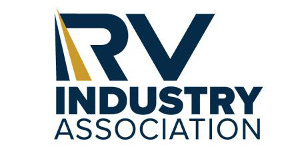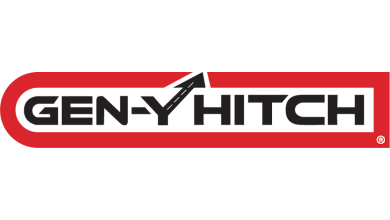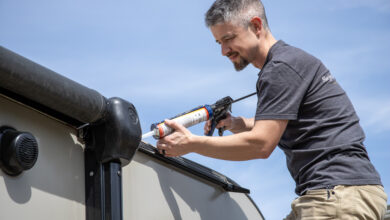How to Prep Parts & Accessories for Next Year
Consider your inventory performance factors when planning for this department.

2023 will soon be history, so perhaps – if you haven’t already done so – it is time to plan for 2024.
Based on the performance of your Parts & Accessories department in 2023, what changes are you planning to implement for that department in 2024? Though there could be several factors such as physical layout, personnel staffing and process documentation, this month’s column focuses on Inventory Performance Factors (IPF). To assist you in considering what IPF you might include in your Parts & Accessories department change plan, here are three IPF with the suggestion of a possible goal for each, and some tips as to how to achieve those goals.
Gross Turns
This is a very useful metric that can be used to track and evaluate the purchasing and the selling performance of your Parts & Accessories manager. The formula for calculating gross turn is:
Cost of Sales – Annualized ÷ Average Inventory Cost – Over the Same 12 Months
It is important to track the gross turns using a rolling 12-month period so that you can account for any seasonality of the purchases and sales of the Parts & Accessories inventories. You could track the gross turns for each inventory subset (type of goods) so that you can easily identify the better performing and the lesser performing subsets.
Reasonably achievable goals for your Parts & Accessories inventories are:
- Parts = 8+ gross turns per year
- Accessories = 5 to 7 gross turns per year
To enhance the success of your plan to improve gross turns, you might include some suggested selling skills training for your parts associates, which could increase the Cost of Sales (COS), which would increase your gross turns.
Within each of your inventory subsets, there will usually be a group of items that are not selling as well as expected and directly impact the gross turns of your inventories. These items are termed Slow Moving Inventory (SMI).
Slow Moving Inventory (SMI)
Before mentioning a suggested goal for your SMI, perhaps it is important to define SMI.
SMI can be defined as items that have incurred no demands (including lost sales and special orders) in nine or more consecutive months and have been received at least 12 months ago.
The SMI should account for less than 15% of your inventory cost value. When calculating your gross turns, you should consider calculating them with the SMI value included and with the SMI value excluded so that you can see the impact of the SMI on your inventory performance.
As part of your 2024 Parts & Accessories plan, you might decide to develop and implement some policies and procedures that could reduce (and possibly eliminate) the SMI. These policies and procedures could include:
- requiring a 100% deposit on any special orders
- for any items sold in package quantities greater than one, require that the entire package be sold – this would apply to items such as hardware, small gaskets and O-rings, and similar such items
- training parts associates to confirm each special order request to ensure that the correct item is ordered, especially when working with suppliers that have a restrictive return policy or if returns are not permitted
- processing a return for any special order items that have been received more than 15 days prior and have not been installed on an RV or have not been retrieved by the customer
You could also develop and implement a method for assigning specific area(s) for storing special order items while they are awaiting installation or retrieval. I also suggest that you assign each special order item a bin location of SO because this identifies the item as being located in the area(s) you have designated for special orders. This SO bin location should be a component of your policy to assign a bin location to each item that is controlled in your Dealership Management System (DMS) database – and which introduces the third Inventory Performance Factor (IPF) that you could include in your 2024 plan for more.
Bin Locations
Perhaps you have heard the common saying “A place for everything and everything in its place.” As a parts manager and in my personal life, every item had/has an assigned bin location. Yes, I use bin locations in my home so that I don’t waste time searching for something when I need it, especially those rarely used items. I once had a mug with the words: “Organized people are just too lazy to look for things.”
The benefits to having everything in its assigned place are:
- a parts associates can place or retrieve each item more efficiently, which could increase the opportunity for more sales transactions (refer to gross turns)
- duplicate orders can be eliminated because each item can be found without searching in places where it might be, yet not finding it
- physical counts of your parts and accessories inventories can be processed more efficiently and accurately
The use of SO as a bin location for items that have been specially ordered for a customer can assist in minimizing SMI and in enhancing customer service. Consider this scenario:
A customer requests an item that is not normally stocked. The parts associate notices that one is on-hand and is located in the special order storage area. That item had been received more than 30 days ago. Since it seems that the original purchaser is not in a hurry to retrieve the item, the parts associate could offer to sell the item to the current customer, thus eliminating the possibility of a lost sale. Assuming the current customer purchases the item, the parts associate would notify the parts manager that the item has been sold. The parts manager has at least two options at this time:
- contact the original customer to determine if the item is still desired and reorder the item for that customer if it is still wanted
- contact the original customer to determine if the item is still desired and, if it is not wanted, offer to refund the customer’s money, less the handling charge
In either case, the product is not in danger of being added to the SMI value of the inventory and a sale has been made to satisfy a customer.
More in ’24? – Your Choice
Yes, as with most of my suggestions for improving your parts and accessories operations, these could require some effort to implement. To quote H. Jackson Brown Jr: “Opportunity dances with those already on the dance floor.” Are you on the dance floor or holding up the wall?



